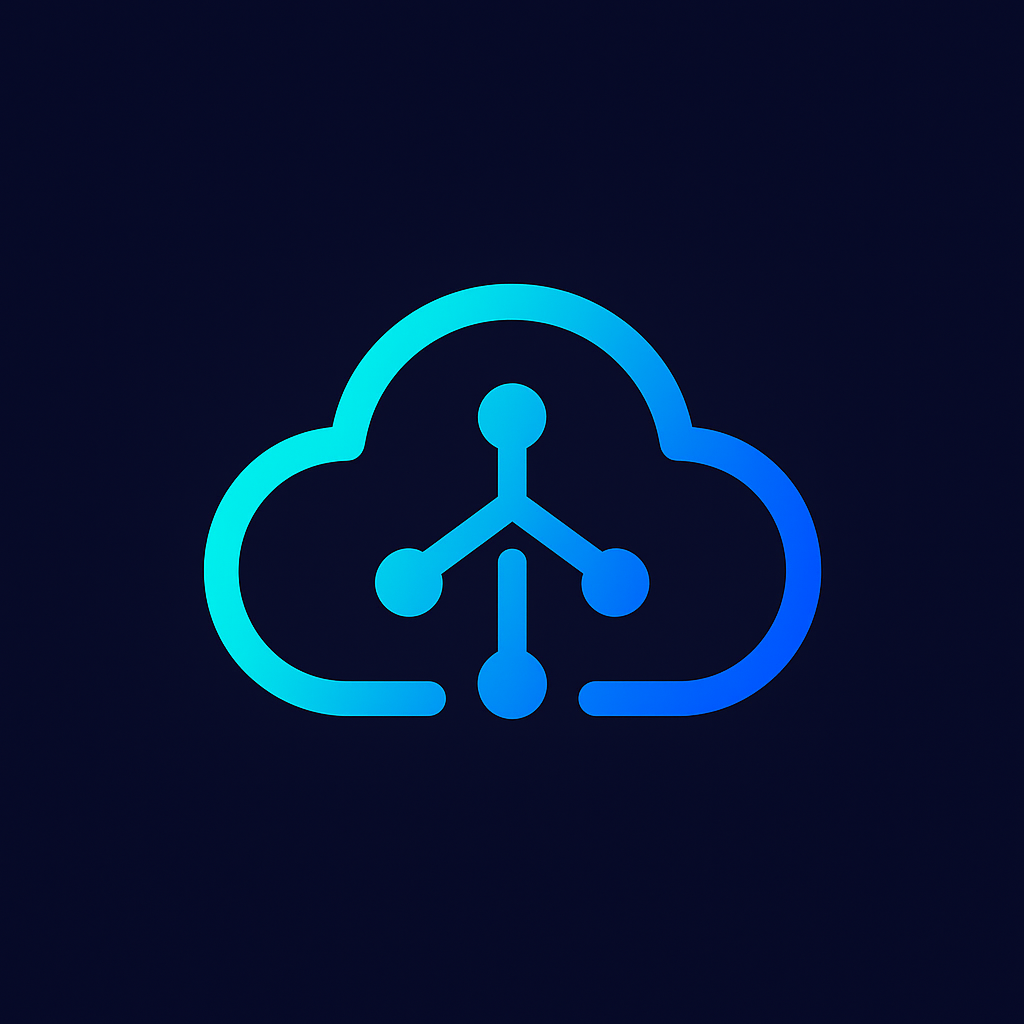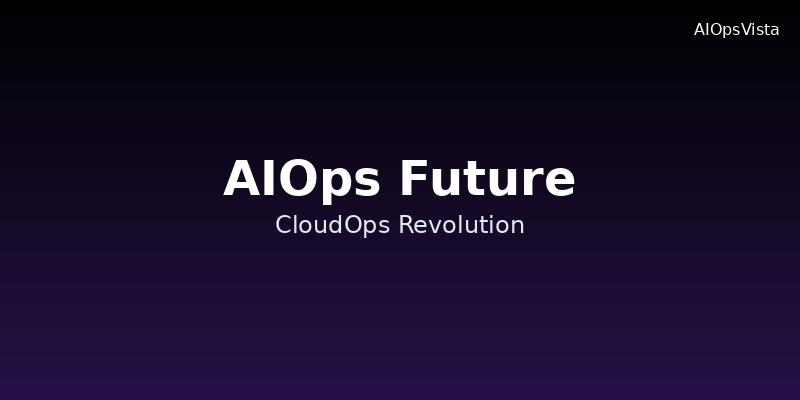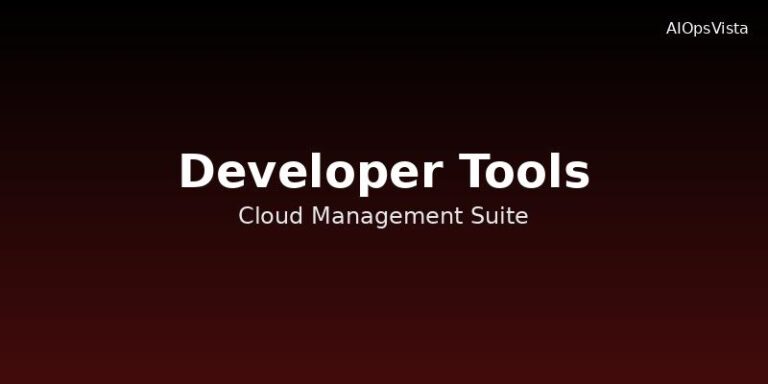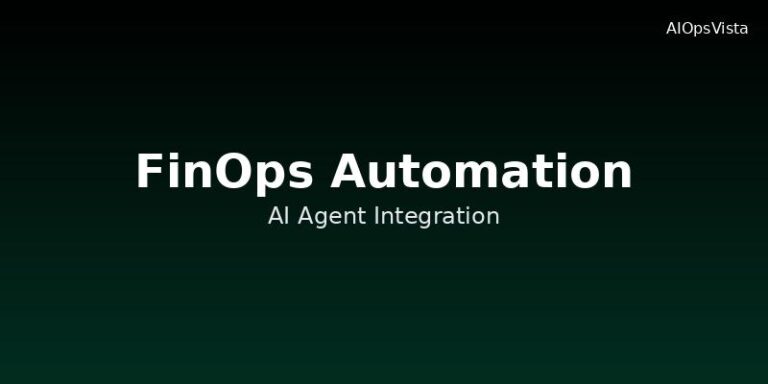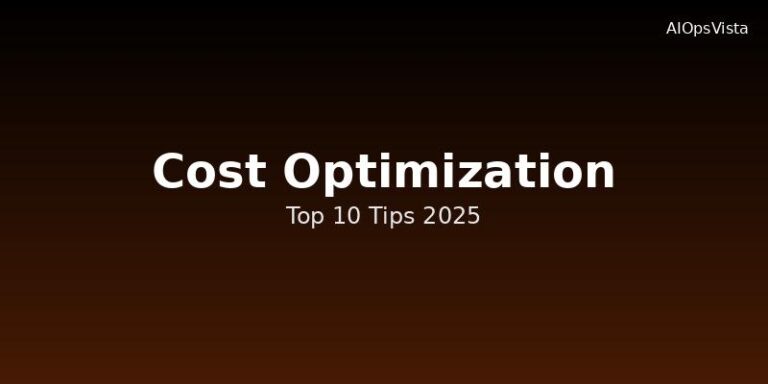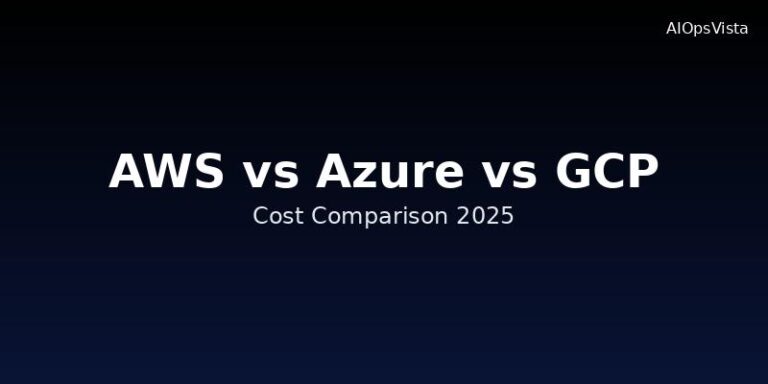What is AIOps? The Future of Cloud Operations
What is AIOps? The Future of Cloud Operations
In an era where digital transformation is accelerating and cloud infrastructure is becoming increasingly complex, traditional IT operations management approaches are struggling to keep up. Enter AIOps (Artificial Intelligence for IT Operations)—a revolutionary approach that’s transforming how organizations manage their cloud operations.
What is AIOps?
AIOps combines artificial intelligence, machine learning, and big data analytics to automate and enhance IT operations. It represents the convergence of DevOps, machine learning, and IT operations management, enabling organizations to:
- Proactively identify issues before they impact users
- Automate routine tasks and reduce manual intervention
- Analyze vast amounts of data from multiple sources
- Provide intelligent insights for decision-making
The Evolution of IT Operations
Traditional IT Operations
Traditional IT operations relied heavily on manual monitoring, reactive problem-solving, and siloed tools. Teams would spend hours analyzing logs, setting up alerts, and troubleshooting issues after they occurred.
DevOps Revolution
DevOps introduced automation, continuous integration/delivery, and improved collaboration between development and operations teams. However, it still required significant human intervention for complex decision-making.
AIOps Transformation
AIOps takes automation to the next level by using AI to analyze patterns, predict issues, and make intelligent decisions. It can process millions of events per second and learn from historical data to improve over time.
Core Components of AIOps
1. Big Data Analytics
AIOps platforms ingest and analyze data from multiple sources:
- Application performance monitoring (APM) tools
- Infrastructure monitoring systems
- Log management platforms
- Network monitoring tools
- Business transaction data
2. Machine Learning Algorithms
ML algorithms power various AIOps capabilities:
- Anomaly detection: Identify unusual patterns in system behavior
- Root cause analysis: Determine the underlying causes of issues
- Predictive analytics: Forecast potential problems before they occur
- Automated remediation: Suggest or implement fixes automatically
3. Automation Engine
The automation engine executes intelligent actions based on AI insights:
- Auto-scaling resources based on predicted demand
- Automated incident response workflows
- Self-healing system configurations
- Intelligent alerting and notification systems
Key Benefits of AIOps
Improved Mean Time to Resolution (MTTR)
AIOps can reduce MTTR by up to 50% by:
- Automatically identifying root causes
- Providing contextual information to engineers
- Suggesting remediation steps
- Learning from past incidents to prevent recurrence
Proactive Problem Prevention
Instead of reacting to incidents, AIOps enables proactive management:
- Predictive maintenance: Identify potential failures before they occur
- Capacity planning: Forecast resource needs based on usage patterns
- Performance optimization: Continuously tune system performance
Cost Reduction
AIOps delivers significant cost savings through:
- Reduced downtime: Fewer service outages and faster recovery
- Optimized resource utilization: Better infrastructure efficiency
- Decreased manual labor: Automation of routine tasks
- Preventive maintenance: Avoiding costly emergency fixes
Enhanced Scalability
As organizations grow their cloud footprint, AIOps becomes increasingly valuable:
- Multi-cloud management: Unified visibility across cloud providers
- Microservices monitoring: Managing complex distributed systems
- Container orchestration: Optimizing Kubernetes and container environments
AIOps Use Cases in Cloud Operations
Cloud Cost Optimization
AIOps can analyze usage patterns and automatically optimize cloud resource allocation:
- Identify underutilized instances for rightsizing
- Recommend reserved instance purchases
- Optimize storage tier placement
- Detect and eliminate wasted resources
Incident Management
Intelligent incident response and management:
- Automated incident triage and prioritization
- Correlation of related events and alerts
- Contextual information for faster resolution
- Learning from incident patterns to prevent recurrence
Performance Monitoring
Real-time performance analysis and optimization:
- Application performance monitoring and tuning
- Infrastructure performance optimization
- User experience monitoring
- Business impact analysis
Security Operations
Enhanced security through AI-powered threat detection:
- Anomaly-based intrusion detection
- Automated threat response
- Security event correlation
- Risk assessment and prioritization
Implementing AIOps in Your Organization
Assessment Phase
Start by evaluating your current IT operations maturity:
- Assess current monitoring and alerting capabilities
- Identify pain points in incident management
- Evaluate data sources and quality
- Define success metrics and KPIs
Platform Selection
Choose an AIOps platform that fits your needs:
- Cloud-native platforms: AWS DevOps Guru, Azure Monitor, Google Cloud Operations
- Specialized AIOps vendors: Moogsoft, BigPanda, ServiceNow AIOps
- Open-source solutions: Prometheus, Grafana, ELK stack with ML extensions
Integration and Data Collection
Set up comprehensive data collection:
- Integrate with existing monitoring tools
- Establish data pipelines for real-time processing
- Ensure data quality and consistency
- Implement proper data governance
Training and Change Management
Prepare your team for AIOps adoption:
- Train operations teams on new workflows
- Develop processes for AI-assisted decision making
- Establish trust in AI recommendations
- Create feedback loops for continuous improvement
Challenges and Considerations
Data Quality Issues
AIOps relies heavily on high-quality data. Common challenges include:
- Inconsistent data formats across tools
- Missing or incomplete monitoring data
- Data silos preventing comprehensive analysis
- Signal-to-noise ratio in alerts and logs
Skills Gap
Organizations may face challenges in finding skilled personnel:
- Data scientists familiar with IT operations
- Machine learning engineers for AIOps platforms
- DevOps engineers with AI/ML knowledge
- Change management expertise for adoption
Integration Complexity
Integrating AIOps with existing systems can be complex:
- Legacy system compatibility issues
- API limitations in older tools
- Network security and access controls
- Scalability concerns with data volume
Trust and Adoption
Gaining trust in AI-driven decisions requires:
- Transparent AI decision-making processes
- Explainable AI recommendations
- Gradual rollout with human oversight
- Success metrics and continuous validation
The Future of AIOps
Generative AI Integration
The integration of generative AI will enhance AIOps capabilities:
- Natural language processing: Conversational interfaces for operations
- Automated report generation: AI-written incident reports and summaries
- Intelligent automation: More sophisticated remediation workflows
Edge Computing and IoT
AIOps will extend to edge environments and IoT devices:
- Distributed AI processing at the edge
- Real-time analytics for IoT sensor data
- Autonomous edge device management
Predictive Maintenance
Advanced predictive capabilities will revolutionize maintenance:
- Equipment failure prediction using sensor data
- Supply chain optimization based on usage patterns
- Proactive replacement scheduling
Measuring AIOps Success
To ensure AIOps delivers value, track these key metrics:
Operational Metrics
- MTTR: Mean time to resolution
- MTBF: Mean time between failures
- Alert volume reduction: Fewer false positives
- Automation rate: Percentage of automated processes
Business Metrics
- Cost savings: Reduction in operational expenses
- Uptime improvement: Increased service availability
- Productivity gains: Time saved through automation
- User satisfaction: Improved service quality
Conclusion
AIOps represents the future of IT operations, offering organizations the ability to manage increasingly complex cloud environments with greater efficiency, reliability, and cost-effectiveness. While implementing AIOps requires careful planning and consideration of various challenges, the benefits far outweigh the investment.
As cloud adoption continues to accelerate and systems become more complex, AIOps will become not just a competitive advantage, but a necessity for organizations that want to maintain operational excellence in the digital age.
The journey to AIOps adoption may seem daunting, but starting small with pilot projects and gradually expanding capabilities is the most effective approach. Organizations that embrace AIOps today will be better positioned to handle the operational challenges of tomorrow’s cloud-native world.
AIOps is rapidly evolving, with new capabilities and use cases emerging regularly. Stay updated with the latest developments to ensure your organization remains at the forefront of IT operations innovation.
